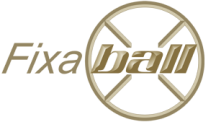Collezione: Socket Screw - Cylindrical Cap
-
0BA Socket Cap Screw High Tensile 12.9 DIN 912
Produttore:BA - Cap HeadPrezzo di listino Da £23.17 GBPPrezzo di listinoPrezzo unitario / per£0.00 GBPPrezzo scontato Da £23.17 GBP -
2BA Socket Cap Screw High Tensile 12.9 DIN 912
Produttore:BA - Cap HeadPrezzo di listino Da £4.86 GBPPrezzo di listinoPrezzo unitario / per£0.00 GBPPrezzo scontato Da £4.86 GBP -
4BA Socket Cap Screw High Tensile 12.9 DIN912
Produttore:BA - Cap HeadPrezzo di listino Da £4.51 GBPPrezzo di listinoPrezzo unitario / per£0.00 GBPPrezzo scontato Da £4.51 GBP -
6BA Socket Cap Screw High Tensile 12.9 DIN912
Produttore:BA - Cap HeadPrezzo di listino Da £4.35 GBPPrezzo di listinoPrezzo unitario / per£0.00 GBPPrezzo scontato Da £4.35 GBP -
BSF 1" Socket Cap Screw High Tensile 12.9 DIN912
Produttore:BSF - Cap HeadPrezzo di listino Da £51.43 GBPPrezzo di listinoPrezzo unitario / per£0.00 GBPPrezzo scontato Da £51.43 GBP -
BSF 1/2" Socket Cap Screw High Tensile 12.9 DIN912
Produttore:BSF - Cap HeadPrezzo di listino Da £4.57 GBPPrezzo di listinoPrezzo unitario / per£0.00 GBPPrezzo scontato Da £4.57 GBP -
BSF 1/4" Socket Cap Screw High Tensile 12.9 DIN912
Produttore:BSF - Cap HeadPrezzo di listino Da £3.98 GBPPrezzo di listinoPrezzo unitario / per£0.00 GBPPrezzo scontato Da £3.98 GBP -
BSF 3/16" Socket Cap Screw High Tensile 12.9 DIN912
Produttore:BSF - Cap HeadPrezzo di listino Da £5.44 GBPPrezzo di listinoPrezzo unitario / per£0.00 GBPPrezzo scontato Da £5.44 GBP -
BSF 3/4" Socket Cap Screw High Tensile 12.9 DIN912
Produttore:BSF - Cap HeadPrezzo di listino Da £33.74 GBPPrezzo di listinoPrezzo unitario / per£0.00 GBPPrezzo scontato Da £33.74 GBP -
BSF 3/8" Socket Cap Screw High Tensile 12.9 DIN912
Produttore:BSF - Cap HeadPrezzo di listino Da £4.68 GBPPrezzo di listinoPrezzo unitario / per£0.00 GBPPrezzo scontato Da £4.68 GBP -
BSF 5/16" Socket Cap Screw High Tensile 12.9 DIN912
Produttore:BSF - Cap HeadPrezzo di listino Da £4.14 GBPPrezzo di listinoPrezzo unitario / per£0.00 GBPPrezzo scontato Da £4.14 GBP -
BSF 5/8" Socket Cap Screw High Tensile 12.9 DIN912
Produttore:BSF - Cap HeadPrezzo di listino Da £9.03 GBPPrezzo di listinoPrezzo unitario / per£0.00 GBPPrezzo scontato Da £9.03 GBP -
BSF 7/16" Socket Cap Screw High Tensile 12.9 DIN912
Produttore:BSF - Cap HeadPrezzo di listino Da £4.25 GBPPrezzo di listinoPrezzo unitario / per£0.00 GBPPrezzo scontato Da £4.25 GBP -
BSW Whitworth 1" Socket Cap Screw High Tensile 12.9 DIN 912
Produttore:BSW - Cap HeadPrezzo di listino Da £17.71 GBPPrezzo di listinoPrezzo unitario / per£0.00 GBPPrezzo scontato Da £17.71 GBP -
BSW Whitworth 1/2" Socket Cap Screw High Tensile 12.9 DIN 912
Produttore:BSW - Cap HeadPrezzo di listino Da £3.42 GBPPrezzo di listinoPrezzo unitario / per£0.00 GBPPrezzo scontato Da £3.42 GBP -
BSW Whitworth 1/4" Socket Cap Screw High Tensile 12.9 DIN 912
Produttore:BSW - Cap HeadPrezzo di listino Da £3.38 GBPPrezzo di listinoPrezzo unitario / per£0.00 GBPPrezzo scontato Da £3.38 GBP
















